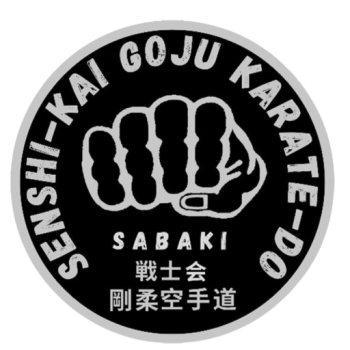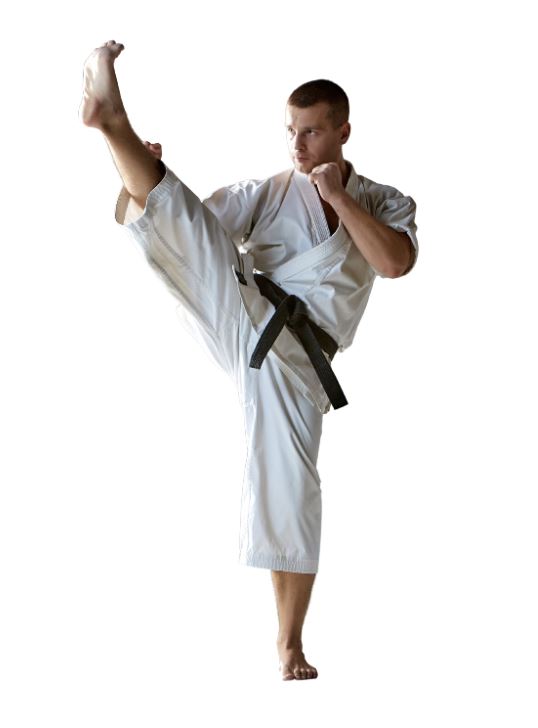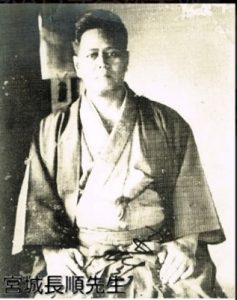WHO WE ARE

Our Name and badge
Senshi-Kai Goju Karate-Do literally translated from the Japanese Language, means:
The Warrior (Senshi) Association (Kai) of the Hard & Soft (Goju) Karate-Do (Empty Hand Way)
Our style badge / insignia contains two significant aspects.
- The first resembles the top part of Chojun Miyagi’s fist.
Legend has it that the hands of Miyagi were so conditioned and strong that he could crush bamboo when closing and clenching his fist around it. - The second aspect is that the fist emphasizes the Goju name as it reflects on the origin from within the Bubishi – The 8 Laws of the Fist. The fist also resembles the logo / insignia of the World Sabaki Federation to whom our system is affiliated to internationally.
Our Style / System
We predominantly teach a refined blend & balance of both the Okinawan & Japanese system of self defense combat Goju Karate, incorporating the principle of Sabaki into our training, which entails that every defensive action is also an attack and therefore combining defence and offence into one.
Our system stems from the original Naha-Te system which was a form of Martial Arts from Naha, a city on the island of Okinawa and is characterised by its flowing circular movements, breathing control and practical applications for all kata techniques that produce a sound basis and foundation for self defense.

Our History at a glance
History records that our system was originally founded by Kanryu Higoanna Sensei who started his Karate training in China (1877) and history considers that “Chinese Nanpa Shorin-Ken” (otherwise known as Southern Shaolin White Crane Kung-fu) was the strain of Kung Fu that influenced this style.
The Chinese martial arts influenced the establishment of Karate as a self defense system in Okinawa, which today is considered as the “Birth Place” of Karate.
In 1901 Higoanna Sensei’s most prominent student – Chojun Miyagi – began his training until the death of Higoanna Sensei in 1916. Chojun Miyagi Sensei later named the style / system the “Hard Soft” style – Goju Ryu

Miyagi Sensei allegedly took the name from a poem called “Hakku Kenpo” which roughly means “The 8 laws of the fist”. This poem was part of the Bubishi (The Classic Manual of Combat) and describes the eight precepts of the martial arts. This poem reads: “Ho wa Goju wa Donto su” (the way of inhaling and exhaling is hardness and softness” or “everything in the universe inhales soft and exhales hard).
Goju Ryu had in the meantime spread to Japan where Miyagi Sensei’s top student was Gogen “The Cat” Yamaguchi, who later formed the IKGA (International Karate Goju Association).
The focus of the style was that of combat / budo karate and the style adopted a strong Japanese influence with a stringent focus on kata and its variety of Bunkai (applications of kata) for self defense purposes.
Miyagi Sensei, born 1888, passed away in 1953 and passed on the Goju system in Japan to Gogen Yamaguchi (born 1909) who was responsible for spreading the Japanese Goju version of the style to all major countries around the world, including South Africa.

Yamaguchi Hanshi (10th Dan and descendent of a Samurai family) passed on the system to his sons, Goshi & Gosei Yamaguchi shortly before passing away in 1989.
